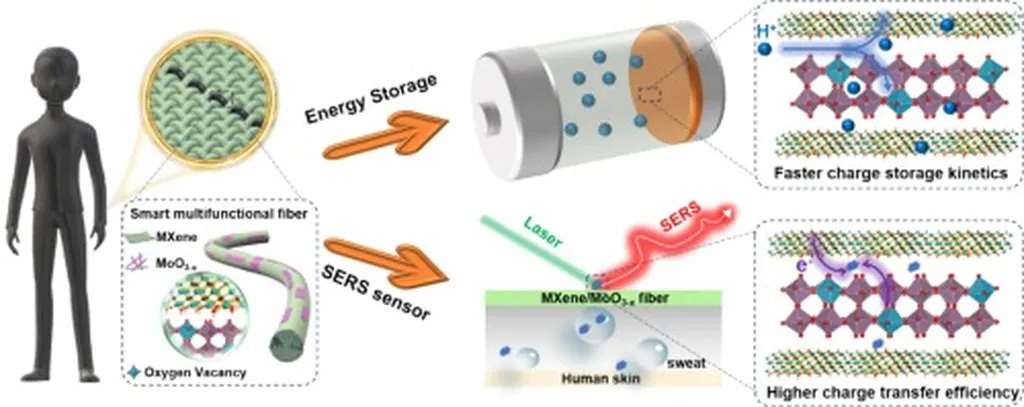In a significant stride towards advanced tactile sensing technology, researchers have developed a flexible, monolithic 3D-integrated tactile sensing system inspired by the intricate workings of human skin. This innovation, published in the English-language journal *Nano-Micro Letters*, leverages a novel holey MXene paste to create a sensor array that could revolutionize various industries, including energy, robotics, and smart devices.
The lead author of the study, Mengjie Wang from the Information Materials and Intelligent Sensing Laboratory of Anhui Province at Anhui University, explains the breakthrough: “Our sensor array mimics the tactile perception mechanism of human skin, offering excellent mechanical flexibility, low-power consumption, and fast response times.” The team achieved large-scale fabrication using blade-coating and imprinting methods, ensuring the sensors’ stability and long-term performance.
One of the most compelling aspects of this research is the integration of the sensor array into a smart access control system. By employing deep learning algorithms, the system can identify users based on their unique pressing behaviors. This application not only enhances security but also demonstrates the potential for personalized interactions in smart environments.
The energy sector stands to benefit significantly from this technology. Tactile sensors with low-power consumption and high sensitivity can improve the efficiency and safety of energy systems. For instance, they can be used in robotic maintenance of power plants, ensuring precise and safe operations. Additionally, the sensors’ flexibility makes them ideal for wearable energy devices, monitoring energy consumption in real-time, and providing valuable data for energy management.
The research also highlights the potential for monolithic 3D integration, a technique that could streamline the manufacturing process and reduce costs. “Our approach allows for the seamless integration of multiple components into a single device, paving the way for more compact and efficient sensors,” Wang notes.
The implications of this research extend beyond immediate applications. The development of advanced tactile sensing technology could spur further innovations in the field of human-machine interfaces, robotics, and smart infrastructure. As the demand for intelligent and responsive systems grows, the need for sophisticated sensing technologies becomes increasingly critical.
In the broader context, this study underscores the importance of interdisciplinary research. By combining materials science, electronics, and artificial intelligence, the researchers have created a technology that could transform multiple industries. The collaboration between academia and industry, facilitated by the Industry-Education-Research Institute of Advanced Materials and Technology for Integrated Circuits, has been instrumental in bringing this innovation to fruition.
As we look to the future, the integration of tactile sensing technology into everyday devices and systems holds immense promise. From enhancing the capabilities of robotic systems to improving the efficiency of energy management, the potential applications are vast. The research published in *Nano-Micro Letters* represents a significant step forward in this exciting field, offering a glimpse into a future where technology is not only more intelligent but also more intuitive and responsive to human needs.

